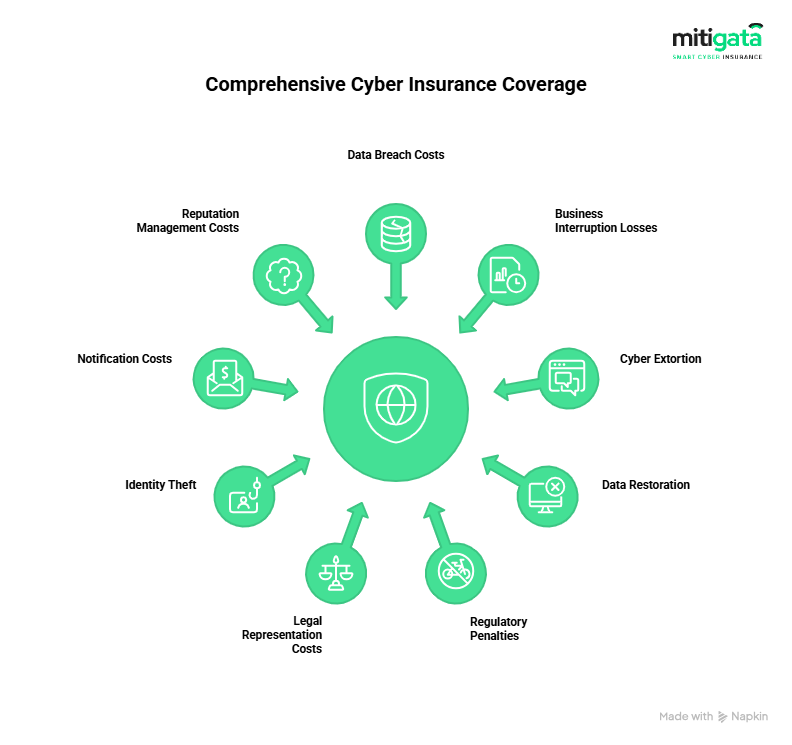In the past year, cybercriminals have hit some of the biggest names in finance.
In January 2024, US-based LoanDepot was hit by ransomware that compromised the personal data of 16.6 million customers, including stolen Social Security Numbers.
Just two months later, American Express cardholder data was exposed after hackers breached a third-party processor. More than 50,000 customers had their names, account numbers, and expiration dates stolen.
If you think India is far safer, then let me give you a shocking fact.
According to Trend Micro, our country is the second most targeted globally for email threats, accounting for nearly a quarter of Asia’s total.
And with the highly sensitive data BFSI institutions hold, this highlights their vulnerability to cyberattacks.
And the numbers say the same thing – in 2024, the average cost of a breach in finance hit $6.08 million, which is 22% higher than the global average across industries.
The question isn’t if the BFSI sector will be targeted, but when. And when it happens, the real question is whether you’re prepared.
In this blog, we’ll look at how cyber insurance for BFSI works and what it covers to protect businesses from the rising wave of cyber risks.
Cyber Insurance for BFSI Starts at Just ₹49,000/Yr*
We secure your operations with 24/7 support, fast claims, and policies trusted by 500+ businesses.

Common Cyber Security Risks in Banking and Financial Institutions
Here are some of the most common security risks faced by the Banking, Financial Services, and Insurance (BFSI) sector:
AI-Driven Cyber Threats
Artificial intelligence (AI) tools are becoming widely available, which enables the creation of automated hacking scripts, deepfake voice calls, and phishing emails. There have been many reports of an AI-powered phishing attack, pretending to be sent by a CEO, that tricks employees into transferring funds.
Ransomware Attacks
These are such attacks where cybercriminals get access to your critical data and then demand a ransom to release it. It has been quite common in BSFI because there are high chances of disrupted transactions and loss of trust. Even a few hours of outage can cause significant reputational and financial damage.
Third-Party Breaches
Your security is only as strong as your weakest vendor. If a payment processor or outsourced IT partner is compromised, your customers’ data may be exposed—something seen in multiple large-scale banking breaches over the past few years.
Mobile Security Threats
While mobile banking apps are becoming more popular, attackers are creating fake apps and exploiting vulnerabilities to steal login credentials. Even a single compromised device can give access to multiple financial accounts.
The Interest You Want on Your Security
We partner with top insurers to bring you unbeatable protection at market-best rates without any hidden costs.

Digital Payment Vulnerabilities
Contactless payments, QR codes, and UPI transactions are quick and easy, but they also make good targets for scammers. For example, attackers can place malicious QR codes at point-of-sale locations to divert funds to fake accounts.
Regulatory Compliance
BFSI institutions have to follow strict guidelines such as RBI standards, GDPR, and PCI-DSS. Noncompliance can result in significant fines and the termination of a license to operate.
Cloud Security Gaps
As banks shift to the cloud, new vulnerabilities appear. Misconfigurations or weak controls can expose sensitive data. Over 100 million credit card applications were stolen from Capital One via its cloud provider.
DDoS Attacks
Flood a bank’s network with fake traffic, and legitimate users can’t get through. In many cases, attackers use DDoS as a distraction to launch sneakier breaches. One major breach linked to DDoS cost the bank millions.
Advanced Persistent Threats (APTs)
These are stealthy, patient, and dangerous. Attackers break in and lie low, gathering data piece by piece. Bangladesh’s central bank lost $81 million in one such attack targeting SWIFT.
Supply Chain Attacks
Hack a third-party vendor, and you can infiltrate multiple institutions. That’s how huge attacks like SolarWinds and the MOVEit breach happened—a compromised vendor led to widespread damage.
Quantum Computing Threats
Quantum computing is still emerging, but it’s already a risk. Current encryption methods may not hold up. A study found that Indian banks scored poorly in readiness for these threats, average score of 2.4 out of 5.
Importance of Cyber Insurance for BSFI
BFSI institutions handle bulk volumes of sensitive customer data, high-value transactions, and strict compliance requirements. According to the RBI’s Financial Stability Report, the Indian financial sector has suffered over 20,000 cyberattacks in the past two decades, leading to losses of around $20 billion.
This is a huge number, which clearly speaks that no institution is protected from cyberattacks, irrespective of your security setup.
Relying only on traditional tools like antivirus software and firewalls is a risky bet. Even most advanced cybersecurity solutions like AI-driven threat detection can’t block every phishing attempt, ransomware attack, or third-party threat.
For banking and financial services, even a single minor vulnerability or small human error can make a spot on nationwide headline news.
And if that happens, you know the costs can go far beyond. Your impacted customers can file lawsuits, and you might have to bear the regulatory fines, ransom demands, and forensic investigation expenses. For financial institutions, the damage can easily shoot up, leading to transaction disruptions, frozen accounts, and loss of customer confidence.
In such cases, a cyber insurance will be like a financial safety net for you – covering costs related to data breaches, business interruption, legal liabilities, and even public relations efforts to repair reputational damage. For BFSI, it’s not just about recovering money – it’s more about regaining the trust of your customers.
In an industry where a single breach can trigger a chain reaction of losses, cyber insurance isn’t optional. It’s an integral part of a complete risk management strategy, ensuring that when prevention fails, recovery doesn’t break the bank.
Mitigata – Cyber Insurance Partner for BFSI Institutions
At Mitigata, we work with leading insurance providers to cut through the noise and find the right cyber insurance for your institution as per your needs and budget.
The Only Bank You Need for Cyber Safety
We make sure your bank statement survives the breach with our round-the-clock BFSI cyber coverage.

Here’s what makes us different:
- Exclusive Access to Mitigata Console – Our in-house platform with features like phishing simulation & training, attack surface monitoring, brand monitoring, dark web alerts, phishing risk detection, and more.
- 24/7 Expert Support – Always available when you need us most.
- No Extra Costs – Fair pricing from day one.
- End-to-End Coverage and fast, hassle-free claims.

Conclusion
So far, you must have understood that cyber attacks are bound to happen irrespective of the industry, and BSFI is one of the main targets of cyber attacks.
With the rising trend of threats like AI-powered hacking and ransomware, relying solely on preventive tools is risky. Hence, in 2025, cyber insurance for banking and financial services is a must.
Get your cyber insurance today and stop waiting for a breach to happen.
Contact Mitigata now!

